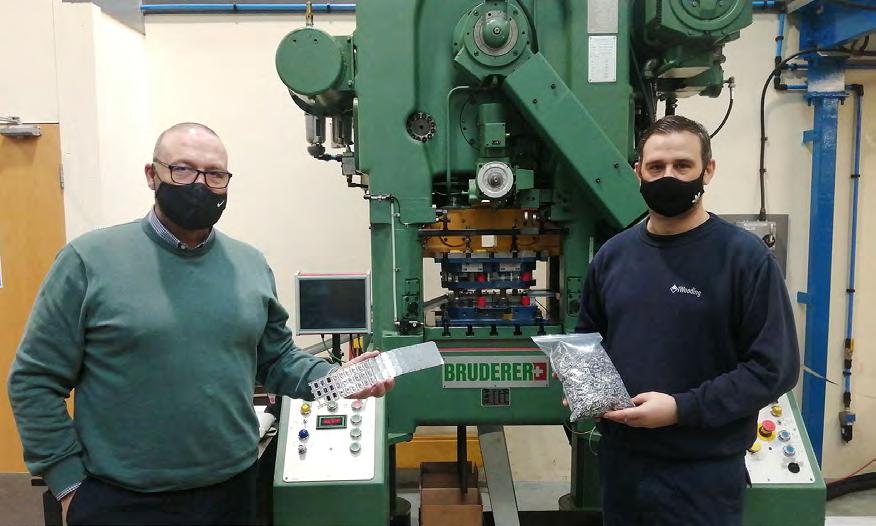Sheet Metal Forming Tools John Yarnall
Part 2b of series 2 Advanced Surface Coatings & Treatments For Protecting Tools Against Wear In Service. I am delighted to present this second instalment on tool coatings as part of ISME’s75th anniversary year. Throughout these years 1946 to 2021, tools have always played a fundamental role in high volume manufacture of sheet metal parts. New CAD and metal simulation software has made possible considerable advances in design to make possible new part shape geometries for automotive and general engineering applications. It is also now recognised that without the advances in press forming equipment with integrated tool design features, these startling developments would not have happened. And now with the new world of digital engineering and manufacture, we can expect to see further striking advances in sheet metal forming technology. There are many more challenges on the horizon for our industry as the range of materials being selected for weight reduction is on the increase. High strength with low weight is now the new mantra for automotive and aerospace designers for their mission to further reduced energy and environmental impact of their products. To achieve their goals a new set of materials is now firmly on their agenda too. The start of this new criteria is now already with us, in the form of micro-alloyed high yield strength steels, high strength aluminium alloy grades, and an advanced set of high temperature and corrosion resistant Nickel/Chromium grades such as stainless steels and Inconel. Tooling materials and coatings are of necessity to enable these new materials to be formed economically. So to help meet these challenges of ever complex forming geometries with increased reliance on ‘zero defect’ high speed forming production, tools have to take the burden. A new generation of tool materials and coatings in combination with metal forming lubricants will need to be the choice of most sheet metal formers to ensure that the economics of their business process keep pace with demand for their high value/high
quality products. As an example: existing high volume food and beverage can manufacture would not be possible without these three technologies: advanced tool materials, process lubrication, tool surface coatings and treatments. As a further illustration to give a historical perspective, press tools used during the periods WW1 &WW2 and up to the 1970’s for stamping and deep drawing, tools were generally made from lower alloy tools steels of grade B O1 or BD series hardened & tempered only, but then latterly, nitride surface hardened in combination with process lubrication were the main enabling technology to assist volume manufacture. Today, advanced HIPIMS PVD coating/duplex treatments is the preferred tool surface protection for many metal sheet forming applications. So the technology conditions of the 1940’s in contrast to those 75 years on has a seismic improvement in tooling technology. These improvements have made possible a transformation in the capability of practice and science of sheet metal forming. I have tried to focus, as space permits, on two or three state-of-the-art forming and stamping technologies. The theme being: tooling, lubrication; surface coating, including work stock material and metallurgical heat treatment using vacuum and plasma techniques. To illustrate how sheet forming has developed to the level of 2021viz tool coatings, lubrication (no specific detail on process lubrication will be referenced in the instalment, this will be featured in a later issue) and metallurgical treatments. The following examples should serve to demonstrate how the industry has moved forward to meet the advanced needs of market demands, sustainability and economics. Some case histories and interesting examples of sheet metal applications of tooling used to produce quality parts for the food, beverage, and automotive markets.
10







